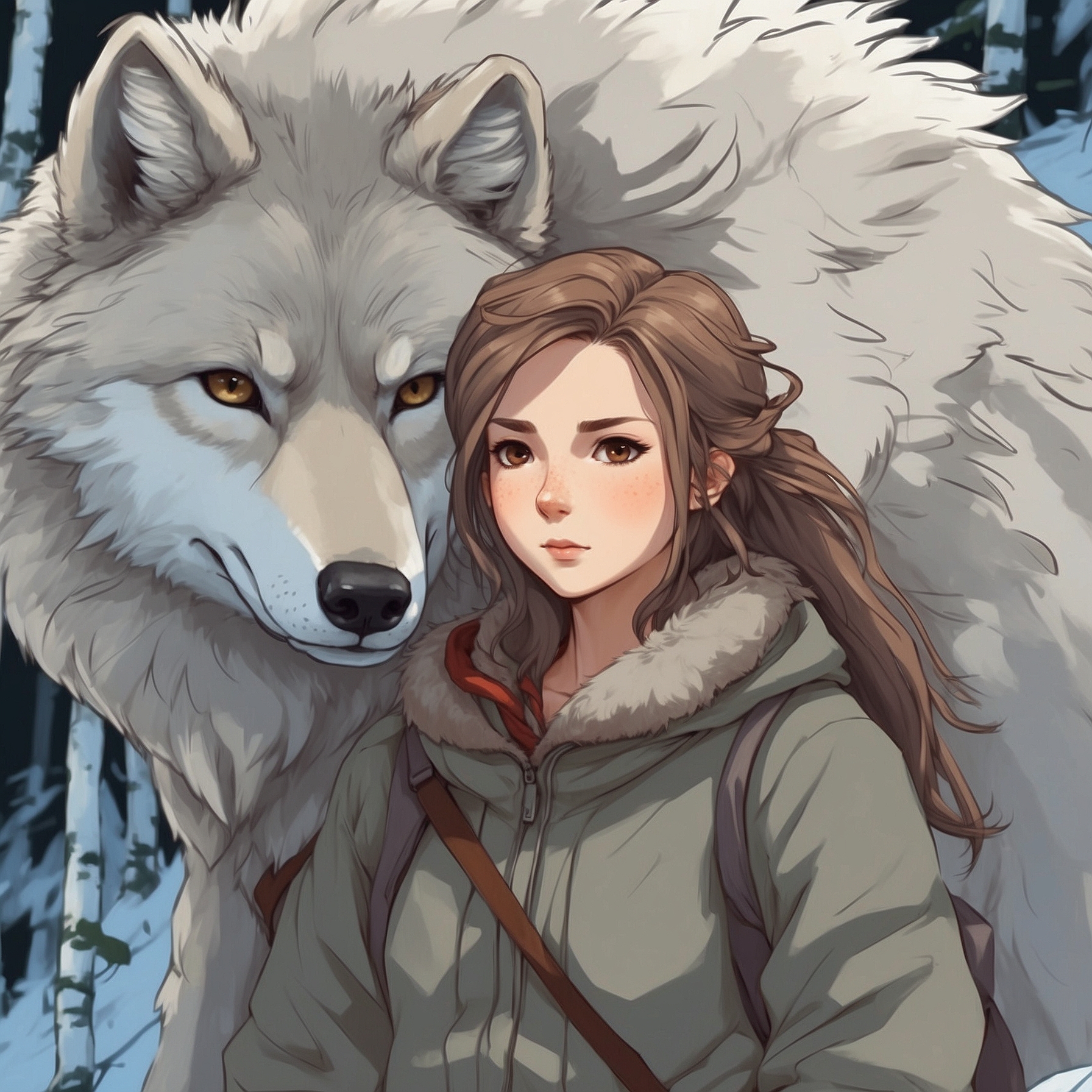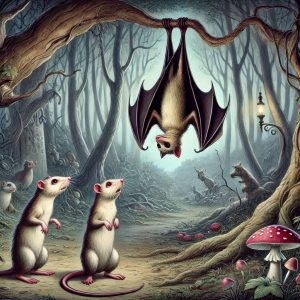
The Ordinary Life of Julie
In a cozy Alaskan village, surrounded by snow-capped mountains and icy rivers, lived a young Inupiat Eskimo girl named Julie. At thirteen years old, she was full of life, her days intertwined with the rhythms of her close-knit community. Julie’s family, like most in the village, depended on the land and sea. Her father taught her to fish, while her mother shared secrets of sewing warm clothes from animal skins.
Julie had a special love for animals, treating them with kindness and respect. Whether it was feeding stray dogs or watching birds soar above, her heart beat for every creature. Her happiest moments were spent in the company of nature, where she felt a deep connection to the world around her.
The Conflict with the Elders
One day, a disagreement shattered the peace of Julie’s life. The village elders decided on a matter that went against her deep beliefs, sparking a fire of frustration in her. Feeling trapped and misunderstood, Julie longed for freedom, for a space where her voice could be heard and her dreams could take flight.
The incident was a turning point. With a heavy heart, she made a daring decision to run away from the village. Julie knew the wilderness outside was harsh and unforgiving, yet the desire for freedom and to live on her own terms was stronger. She packed her essentials, whispered a goodbye to her beloved animals, and stepped into the unknown.
Julie’s Transformation into a Wolf
As she ventured deeper into the wild, Julie realized that survival would require more than just courage. Cold, hungry, and alone, she faced the chilling reality of her decision. Then, something extraordinary happened. Through sheer will and a deep-seated connection to the natural world, Julie began to transform. Her senses sharpened, instincts took over, and she found herself moving with the stealth and grace of a wolf.
This transformation was both terrifying and exhilarating. At first, Julie felt a wave of fear and confusion. How could a girl adapt to living as a wolf? But as days turned into nights, she learned to embrace her new identity. Julie discovered strength she never knew she had, a strength that would help her navigate the challenges of the wild.
Learning to Survive
Julie’s journey into the wilderness was like stepping into a whole new world. At first, everything seemed daunting. She knew she had to learn quickly if she was going to survive. So, Julie watched the animals closely, learning from their behavior. She noticed how birds signaled when danger was near and how small creatures found food and shelter.
For food, she remembered the skills her father had taught her about hunting and gathering. Julie fashioned a simple bow and arrows from materials she found in the woods. With patience and practice, she became adept at hunting small game. She also learned which plants were safe to eat, which berries were sweetest after the first frost, and how to fish in the icy streams.
Finding shelter was another challenge. Julie initially sought refuge under the boughs of thick evergreen trees, which provided some protection from the wind and snow. But she knew she needed something more substantial. Observing the dens of foxes and the nests of birds, Julie used what she could find to create her own shelter. Bits of bark, moss, and branches became her building materials. She constructed a small, insulated space that kept her warm during the cold nights.
Throughout these trials, Julie developed a profound respect for nature. She realized that every plant, every animal had its place in the ecosystem. She saw the beauty in the circle of life and understood that she was just a small part of a much larger world.
Meeting the Wolf Pack
Julie’s first encounter with the wolf pack was a moment she would never forget. She stumbled upon them one crisp morning, the sun casting a golden glow over the landscape. At first, she was scared, frozen in place. But as she watched them from a distance, she saw the beauty in their movements, the way they communicated without words, the bonds that held them together. They were a family.
Slowly, Julie began to inch closer to the pack over the following days, making sure not to startle them or invade their space. She remembered her father’s advice on how to show respect to wild animals. “Make yourself small, show no fear, no aggression,” he had said. Julie did just that. She also brought offerings of food, leaving them where the wolves would find them, showing that she meant no harm.
It took time, but gradually, the pack began to accept her presence. There was one wolf, in particular, a young female with striking blue eyes, who seemed more curious about Julie than the others. This wolf approached her one day, sniffing the air cautiously. Julie remained still, letting the wolf come closer, until finally, the wolf accepted a piece of meat from her hand. It was a pivotal moment. Julie had earned their trust.
Julie’s Relationship with the Wolves
As the days turned into weeks, Julie’s bond with the wolf pack grew stronger. She learned to understand their signals, their howls, and their body language. It was as if she had become one of them, running alongside the pack, hunting with them, sharing in their triumphs and their losses. The young female wolf with the blue eyes, whom Julie named Shadow, became her closest companion. They were inseparable, exploring the wilderness together, learning from each other.
Julie discovered that the wolves had much to teach her about survival, about loyalty, and about love. They worked together as a team, each member playing a vital role in the pack’s success. Watching them, Julie realized the importance of community, of working together towards a common goal.
Through her relationship with the wolves, Julie found a sense of belonging she had never felt before. They had accepted her, not as a human, but as a fellow creature of the wild. With them, she felt free, unburdened by the expectations and rules of her human world. Yet, even as she thrived in the wilderness, a part of her remembered her human family, her village, and the life she had left behind. This duality, being part of both worlds, yet fully belonging to neither, was something Julie grappled with as she continued to navigate her incredible journey of survival and self-discovery.
The Decision to Return
After many moons among her wolf family, Julie felt a stirring in her heart, a quiet whisper urging her to revisit her roots. Memories of her village, once sharp as the cold Alaskan air, had softened around the edges, replaced by the wild’s embrace. Yet, thoughts of her human family, their laughter, and shared moments, flickered like the northern lights across her mind’s sky.
One crisp morning, as golden sunlight spilled over the snow, Julie knew it was time. Telling her wolf family goodbye tugged at her heartstrings, leaving a melody of mixed emotions. She was torn, feeling both the pull of her past and the call of the wild that had become her sanctuary.
The Challenges of Returning
Stepping back into her village was like walking into a forgotten dream. Faces once familiar now seemed distant, their glances filled with curiosity and whispers of change. Julie noticed new cabins, unfamiliar faces, and the relentless march of progress that had not waited for her.
Reconnecting with her family proved bittersweet. They struggled to understand her transformation, the wildness in her eyes, and her tales of living among wolves. Julie found herself caught between two worlds, grappling with how to fit the freedom and lessons of the wilderness into the structure and expectations of her village life.
The Resolution
In the days that followed, Julie’s journey came full circle. She realized that her time in the wild had gifted her with invaluable insights—a bridge between the ancient ways of her people and the encroaching modern world. With patience and passion, she began to share her knowledge, teaching her village about the delicate balance of nature, the importance of respecting wildlife, and how to coexist peacefully with the earth.
Her family, initially hesitant, slowly embraced Julie’s experiences, seeing in them the wisdom of the old ways fused with new understanding. Together, they found a new rhythm, one that honored both their heritage and the lessons Julie brought back from the wild. Her story, a testament to the power of courage, survival, and the unbreakable bonds of family, echoed as a beacon of hope and adaptation, inspiring not just her village but all who heard her tale.






